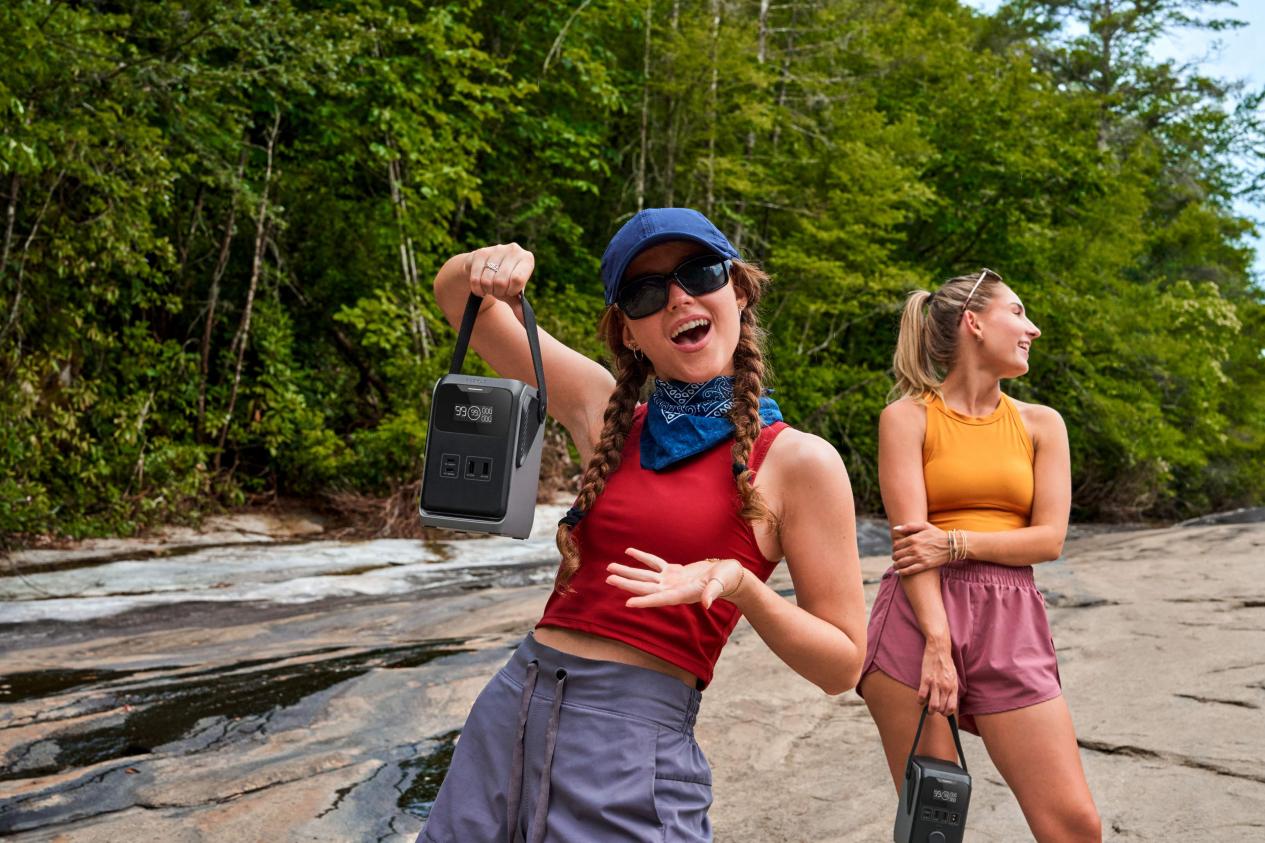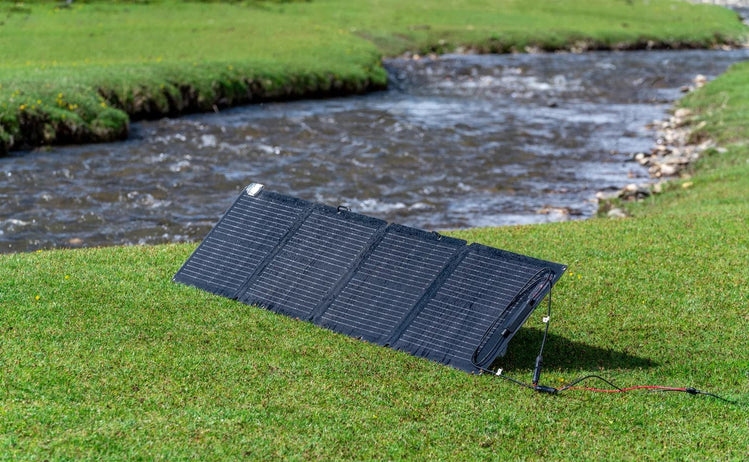What is the best small portable power station?
From weekend camping trips to working remotely from a park bench, reliable power is essential. When you're off the grid or the power at home goes out, keeping your phone and laptop charged is non-negotiable. That's where small portable power stations come in. These compact devices are the quiet, convenient answer for powering your gear wherever you happen to be, offering a dependable source of electricity without the noise and fumes of a traditional generator.
What Qualifies as a Small Power Station?
When people talk about "small" portable power stations, they're usually referring to units that hit the sweet spot between power and portability.
Capacity and Portability
These are typically devices with less than 500 watt-hours (Wh) of capacity—plenty of juice for personal gadgets and small appliances without the bulk. This range is ideal for most personal electronics, making them a go-to for weekend adventures, day trips, or as a simple backup for your must-have electronics at home. For example, a portable power station like the EcoFlow TRAIL 200 DC, with its 192Wh capacity and a weight of just over 4 pounds, is a prime example of a power station built for maximum portability. Even slightly larger models, such as the TRAIL 300 DC at 288Wh, still fall comfortably into this category, offering more power without becoming too cumbersome.
Designed for Life on the Go
Their entire design is built around convenience. Unlike their heavier, high-capacity cousins that are a two-person job to move, these smaller models are meant for life on the go. They’re light enough to be grabbed with one hand, tossed in the trunk of a car, or stashed in a closet until needed. This compact size doesn't mean they skimp on features; a well-made unit will still provide a variety of plugs to charge several gadgets at once, keeping everything from your phone and drone to your camera and tablet topped off.
What to Look For in a Top Small Power Station
Picking the right portable power station means looking past the slick design and getting a feel for the specs that drive its performance. Paying attention to these details will help you land a device that fits your needs perfectly, so you aren't left with too little power when you need it most or stuck hauling around a unit that's overkill.
Decoding Power Output and Battery Life
Two numbers tell you almost everything you need to know: watts (W) and watt-hours (Wh). Watts measure the output, or how much power the station can deliver at once. This determines what you can plug in. You'll often see two figures: continuous power (the steady stream it provides) and surge power (a short burst to start up appliances with motors, like a small blender). Check the wattage of your devices to make sure the power station can handle them.
Watt-hours, on the other hand, measure the capacity, or how long the station can run your devices. This figure tells you the size of the battery's "gas tank." For instance, the 192Wh battery in the TRAIL 200 DC could charge a typical smartphone (which uses about 5-10Wh per charge) more than 15 times. This is a back-of-the-napkin calculation, as you’ll lose a little energy to inefficiency, but it gives you a great ballpark figure.


Finding the Right Mix of Ports
A power station is only as useful as the plugs it offers. A good one will have a mix of ports to cover all your bases.
AC Outlets: Standard AC outlets, just like the ones in your wall, are a must for charging laptops or running small gear. Look for "pure sine wave" models—this just means they provide clean power that won't damage sensitive electronics like cameras or drones.
USB-A Ports: These are the classic rectangular ports you know and love, great for charging phones, headlamps, and other small accessories.
USB-C Ports: This newer, faster standard is becoming the go-to for modern laptops, tablets, and smartphones. A high-wattage USB-C port (often labeled PD for Power Delivery) is a huge bonus for quick charging.
DC Ports: Usually a 12V car-style socket, these are handy for powering portable coolers, tire inflators, and other gear designed for vehicles. This is a key differentiator between models; for instance, the TRAIL 300 DC includes a 120W car outlet for these kinds of accessories, while more streamlined models might omit it to save space and weight.
Evaluating Your Recharging Options
Of course, a dead power station isn't much help. Luckily, you have a few ways to get it charged up again. Plugging it into a wall outlet at home is the most common and usually the fastest method. For road trips, the ability to charge from your car's 12V socket is a lifesaver, letting you top off the battery while you drive. The most liberating option, though, is solar charging. Hooking your power station up to a portable solar panel gives you true energy freedom, letting you generate clean power straight from the sun. This is a game-changer for long camping trips or extended power outages. New innovations have even produced trail-focused power stations specifically for hikers, who value low weight and efficient solar charging above all else.


Prioritizing Durability and Safety
These devices are meant to be carried, so how they're built matters. You'll want something that feels solid but doesn't weigh a ton. A comfortable, ergonomic handle can make a huge difference when you're carrying it from the car to the campsite. The outer shell should be tough enough to handle the occasional bump or scuff from being out in the wild. A good LCD screen that clearly shows the battery level, power draw, and any alerts is also a huge plus.
Safety is paramount. A quality power station will have a built-in Battery Management System (BMS). This is the unit's brain, protecting it from common issues like short circuits, over-charging, and getting too hot. A good BMS not only protects your expensive electronics but also extends the life of the power station's battery, giving you confidence every time you use it. The newest models, including specialized gear like those in the TRAIL series, pack advanced safety systems into highly portable designs.
Matching a Power Station to Your Needs
So, how much power do you actually need? A little prep work here will save you headaches later.
List Your Must-Have Electronics
Jot down a list of the electronics you can't live without. A day-hiker who just needs to keep a phone and GPS watch charged would find a lightweight option like the TRAIL 200 DC to be a perfect fit, as its low weight won't be a burden on the trail. Conversely, a remote worker or weekend camper planning to run a laptop and a small portable cooler would need the higher capacity and added car outlet found in a unit like the TRAIL 300 DC.
Do the Math
Next, look at the power label on each device or its charger to find its wattage. Add up the wattage of things you'll use at the same time to see the total output you need. Then, estimate how long you'll use everything to figure out your total watt-hour needs. This quick math will point you to a power station that’s just right for you, not too big and not too small.
4 FAQs About Small Portable Power Stations
Q1: How long will a small portable power station last on a single charge?
That all comes down to the station's capacity (in Wh) and what you plug into it. To get a rough idea, just divide the station's watt-hours by the wattage of your device. For example, a 400Wh unit could keep a 40W portable cooler running for about 10 hours. It's always a good idea to check your gear's power draw against the station's capacity.
Q2: Can I bring a portable power station on an airplane?
Flying with lithium-ion batteries is tricky due to airline rules. The FAA generally allows batteries under 100 watt-hours (Wh) in your carry-on bag. Some airlines might approve batteries between 101Wh and 160Wh, but you have to ask first. Anything bigger is usually a no-go.
Q3: What is the best way to recharge my power station while camping off-grid?
Solar charging is your best bet for staying powered up off-grid. Hooking up a compatible solar panel lets you generate your own clean energy whenever the sun is out. It’s perfect for multi-day trips. You can also use your car’s 12V outlet to charge it while the engine is running, which is great for topping off the battery on the drive to your next spot.
Q4: Is it safe to leave my electronics plugged into the power station overnight?
Yes, for the most part. Quality portable power stations come with a built-in Battery Management System (BMS). This is a critical safety feature that prevents problems like overcharging, overheating, and short circuits. It keeps both the power station and your devices safe, so you can plug in your phone or laptop and not worry about it.
Choosing the Best Small Portable Power Station
Ultimately, the best small power station is the one that fits your life. By looking at its capacity, power output, and port selection, you can find a unit that’s ready for anything you throw at it. Whether you need a dedicated, lightweight TRAIL series model for hiking or a versatile unit for all-around use, the goal is the same: to find that perfect, reliable sidekick for your adventures, ensuring you have power whenever and wherever you need it.